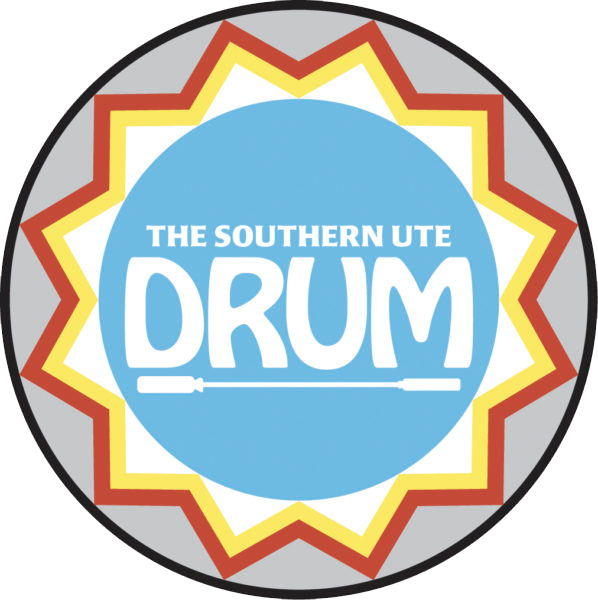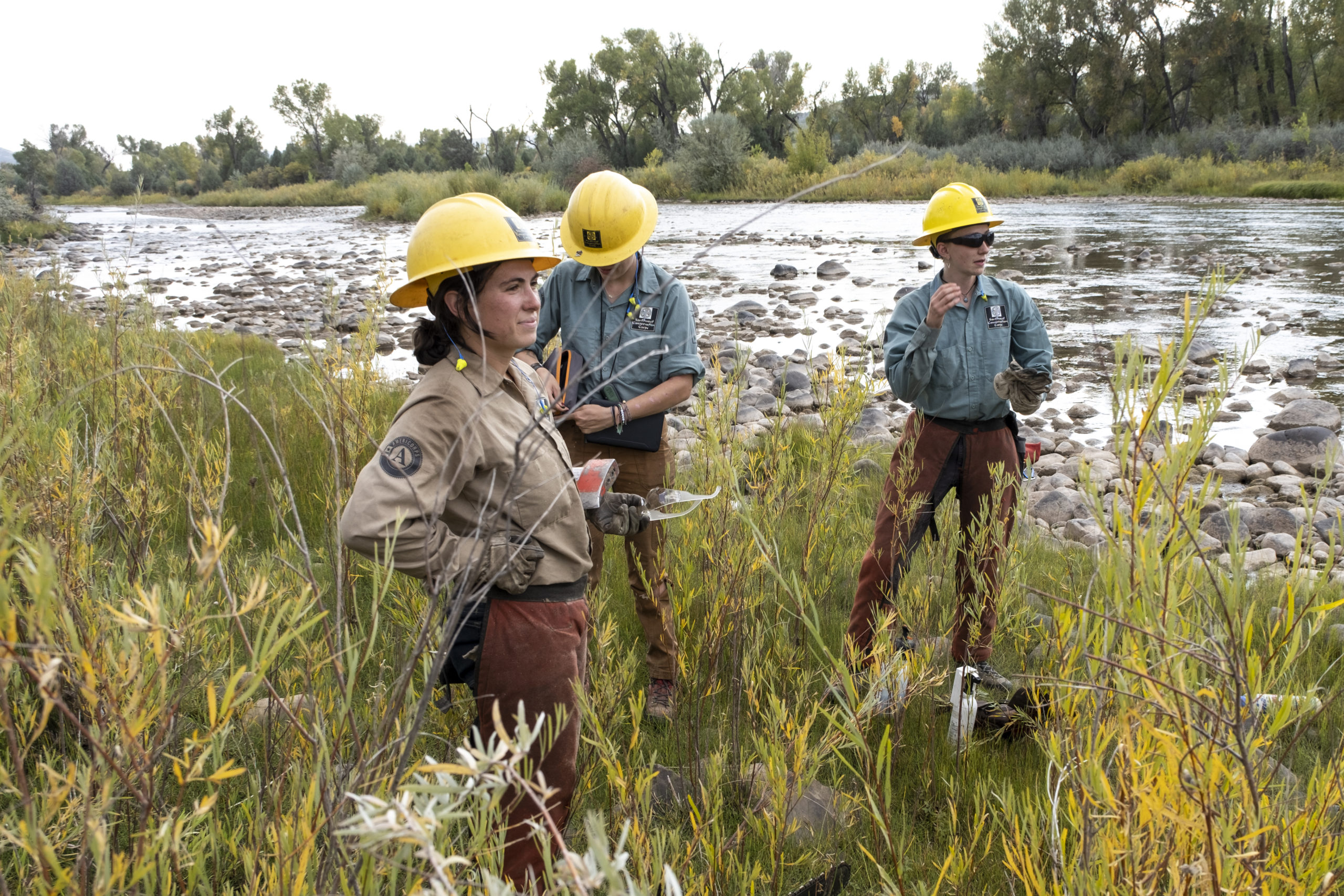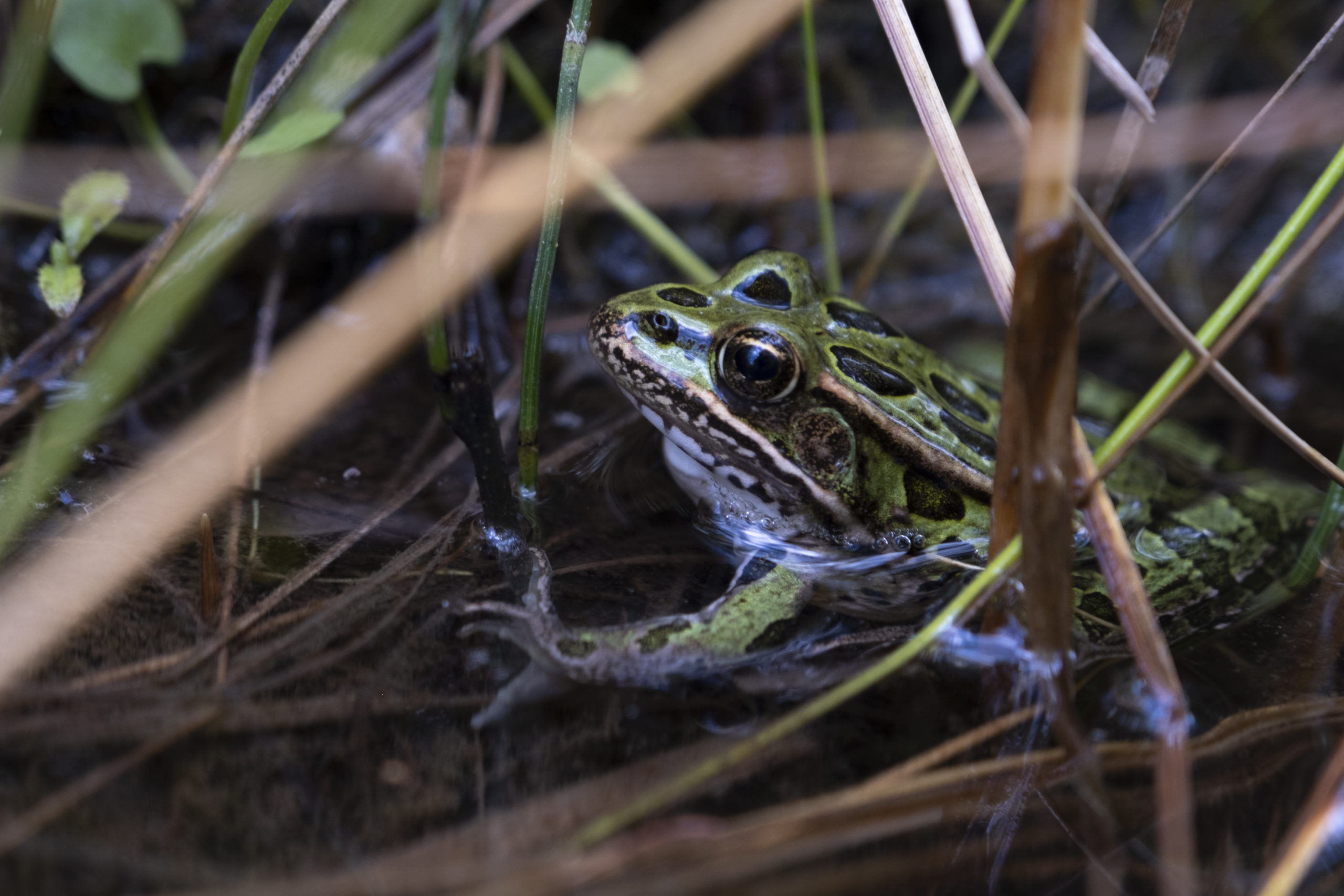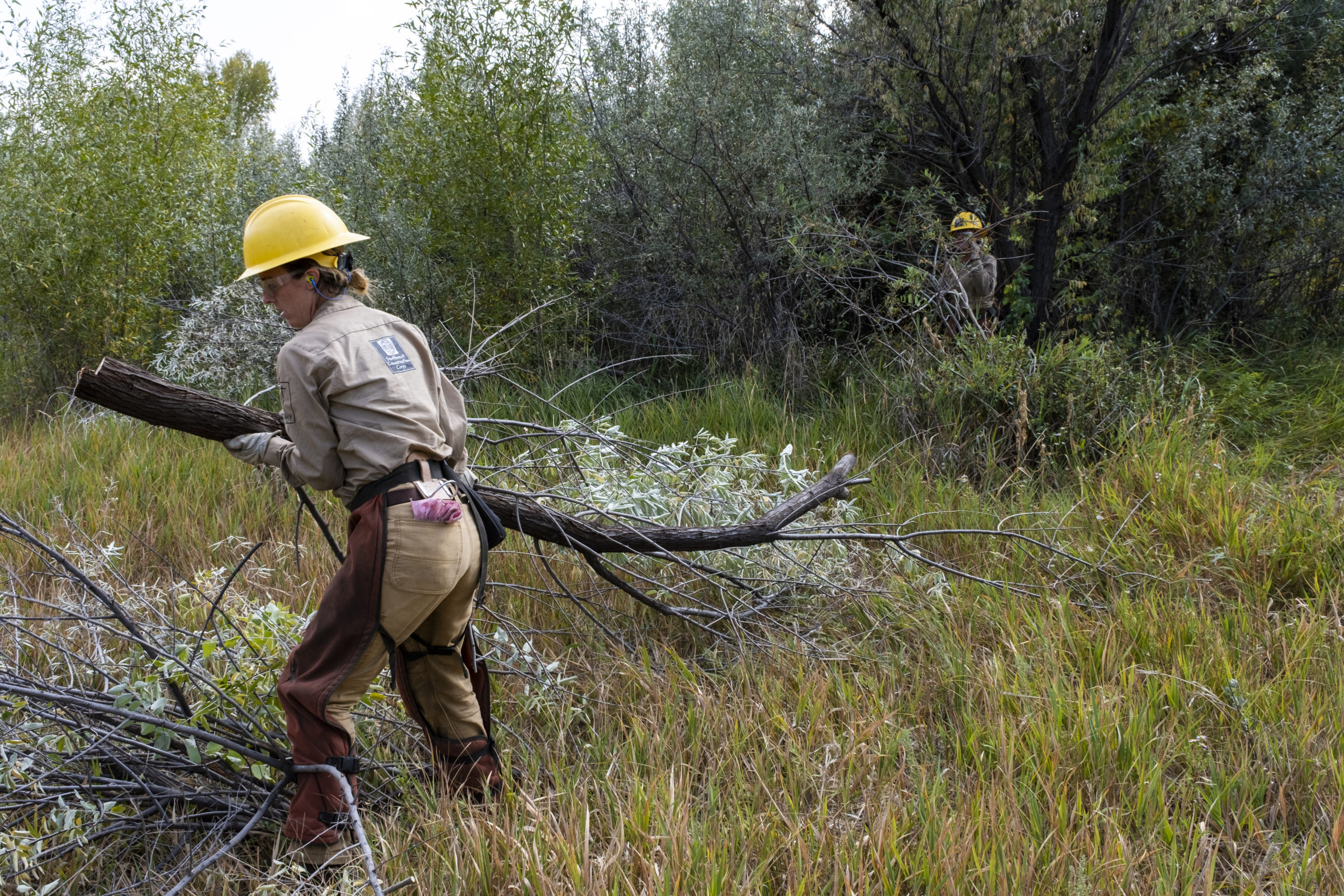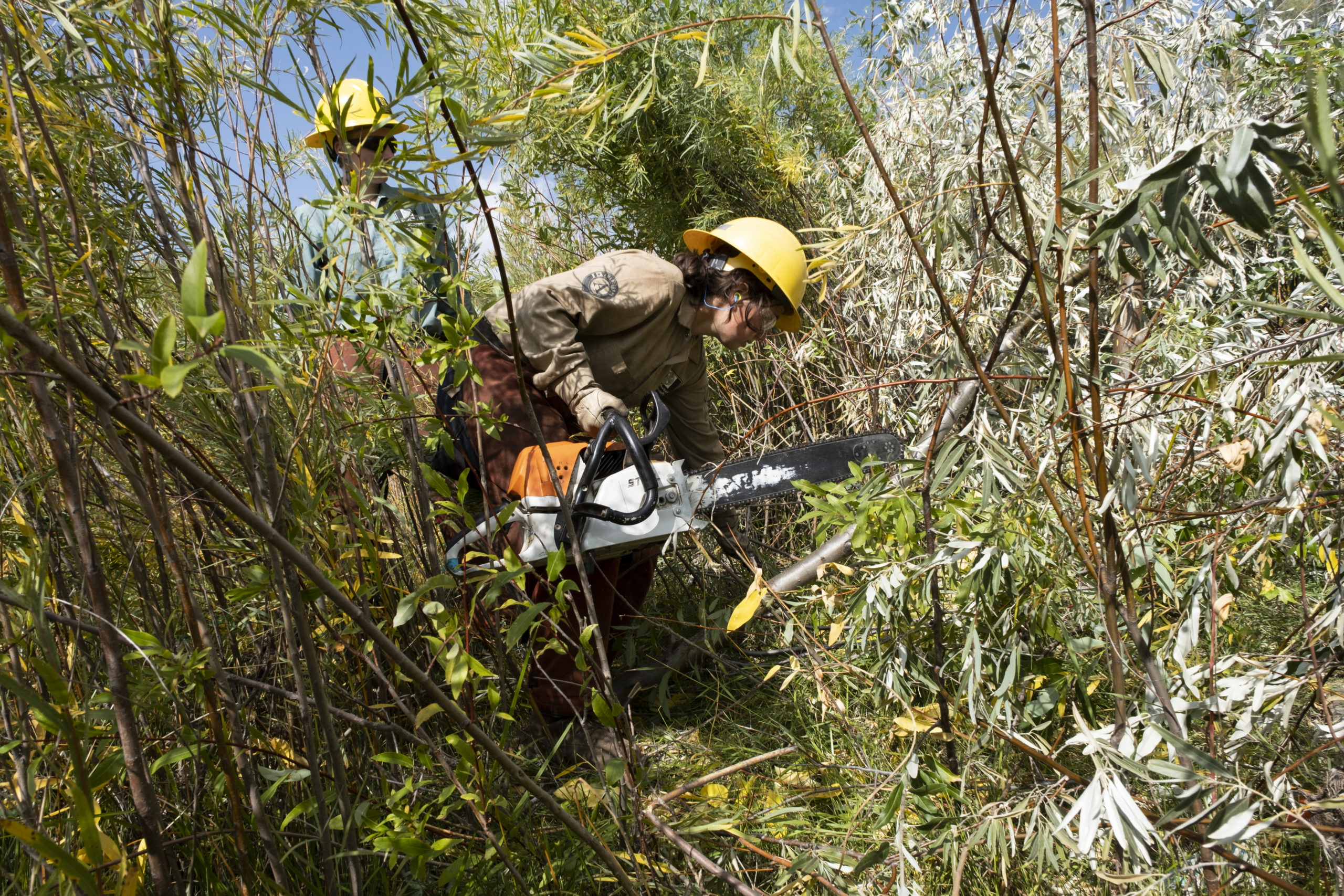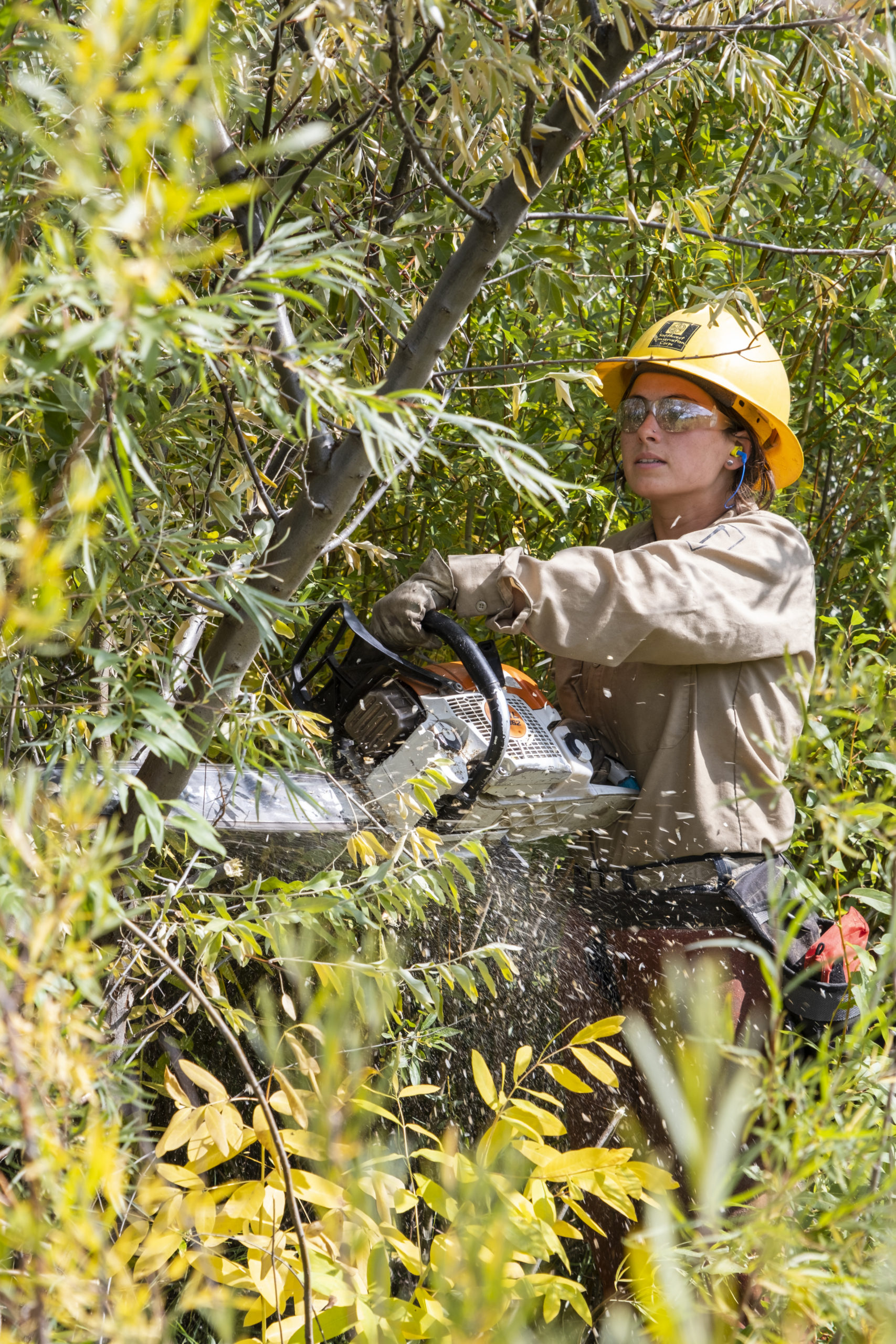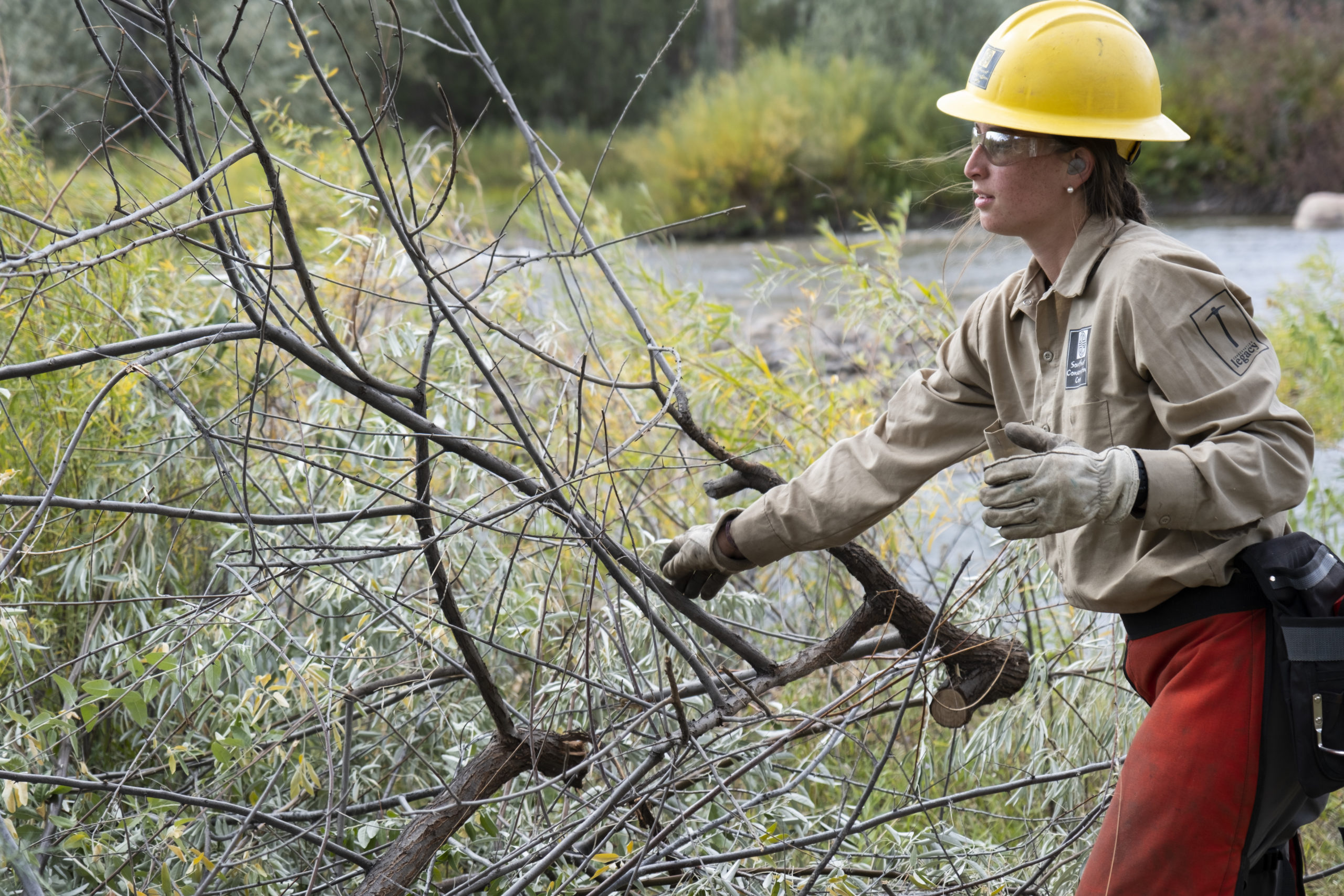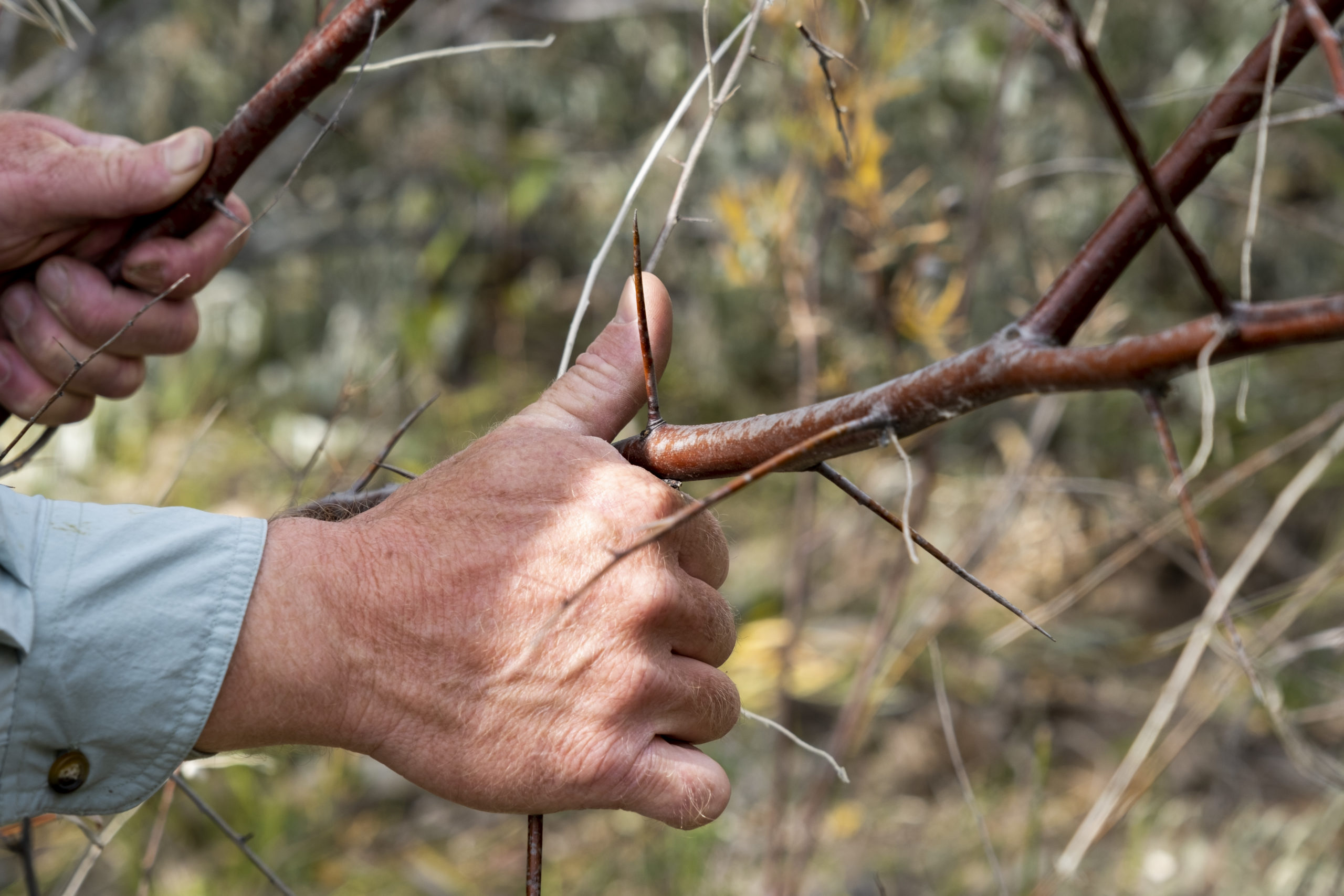Southwest Conservation Corps assists Tribe with invasive tree removal







A chainsaw crew from the Southwest Conservation Corps (SCC) was contracted by the Southern Ute Indian Tribe and Mountain Studies Institute to help remove two invasive tree species, Russian olive and tamarisk, along the Animas and La Plata Rivers.
Earlier this year the Southern Ute Wildlife Resource Management Division received a grant from the Bureau of Indian Affairs, Invasive Species Program for $45,557 to remove these two species. “We have leveraged money and work in partnership with Mountain Studies Institute to treat areas on the reservation and adjacent private land parcels,” Project Manager Ben Zimmerman explained. “There are several dense stands of tamarisk and Russian olive found on the west side of the Reservation.” Within the SUIT Natural Resources Management Plan, a goal is established to limit the spread of invasive noxious weeds and reduce their presence. Tamarisk and Russian olive are specifically identified as weed species targeted for treatment.
“We look forward to continuing our partnership with mountain studies institute to continue this important work to continue preserving our native vegetation and cottonwood stands along these river corridors,” Zimmerman stated. “I am very gratefully for their hard work and helping to allow our native cottonwoods to persist.”
Russian olive was introduced into North America by the late 19th century, and was both planted and spread through the consumption of its fruits by birds, which then disperse the seeds. Russian olive is considered to be an invasive species in many places in North America because it thrives on poor soil, has high seedling survival rates, matures in a few years, and out-competes the native vegetation. It often invades riparian habitats where the canopy of cottonwood trees has died.
Tamarisk has become a major invasive plant species in the Southwestern United States consuming large amounts of groundwater in riparian and oasis habitats due to the density of its stands. The high salt level in tamarisk infiltrates the soil, preventing other plants from growing, creating a tamarisk-dominant forest with no understory, void of important habitat for pollinators and other native species.
“It’s an honor to partner with these organizations and be welcomed on this land year after year,” said Lisa Slupianek Program Manager for Southwest Conservation Corps. “SCC not only focuses on the project work, but there’s a large emphasis placed on education and personal development. Working with different organizations and agencies, learning about invasive species and educating ourselves on the land and our surroundings is a great combination. I am excited to continue to grow this partnership, and provide more opportunities for local youth in the Four Corners region to get outside and find meaningful work.”
Mountain Studies Institute has received financial support for the project from Colorado Parks and Wildlife’s Wetland Enhancement Program, and from Colorado Water Conservation Board’s Watershed Restoration Program and Colorado Water Plan Grant. Each of these grant programs requires matching funds.
“By working together and leveraging our funding sources, we are able to get more accomplished to work towards a healthier watershed,” explained Amanda Kuenzi, Mountain Studies Institute.
The Mountain Studies Institute is also working with private landowners on parcels adjacent to Southern Ute tribal lands to restore large swaths of the riparian corridor along the Animas River. Seeds are easily spread along the river corridor, so by clearing Russian olive from adjacent parcels, there is less chance of new trees sprouting up on tribal lands.
“SCC’s primary contribution to this collaborative partnership is to put technical crews on the ground – this work can be very time and labor intensive and requires a detailed and thoughtful approach,” Jordan Burningham, Operations Director for Southwest Conservation Corps emphasized. “Our field crews use chainsaws as well as other hand tools to treat these areas in the least impactful way possible and often camp nearby in order to maximize time in the field. Our members are serving a term for AmeriCorps in which they volunteer their time to work on service projects in the region, and in return get critical training as well as experience in conservation-based projects to aid in their professional development and workforce readiness.”
“Our immersive model also helps individuals learn how to effectively work in a team environment and be able to lean on each other a bit more for support,” Burningham explained. “This aspect is critical for us when running crews that are built around offering a space where under-represented populations can flourish; in this case particularly, [an all-women/non-binary chainsaw crew] in a male-dominated industry. Southwest Conservation Corps offers many crew models and varying work throughout the region in order to best answer local land-management needs, as well as offer many pathways for our participants to fine tune their experience during their time of national service.”
The crews continue working together, 10 days on, four days off, mitigating a mixture of private and tribal lands which sit adjacent to each other, cut by winding riverbanks. The chainsaw crews will continue their work through early November, moving north and south through the Animas River Valley.
“As you move south along the Animas River and into the San Juan River corridor, into warmer temperatures at lower elevations, you see Russian olive becoming more and more dominant, even creating a monoculture. Russian olive thrives in desert environments, so by removing the seed source today, we are building resilience for a healthier watershed in the future when we may see warmer temperatures in our reach of the Animas River, explained Kuenzi. “We are working together today to ensure a more secure water supply and a healthier river ecosystem for tomorrow. I’m so glad to be working with the Southern Ute Indian Tribe and Southwest Conservation Corps on this project. It allows us to get so much more accomplished by working together!”
